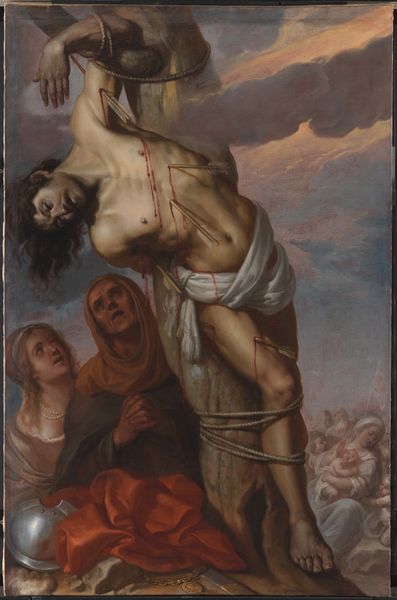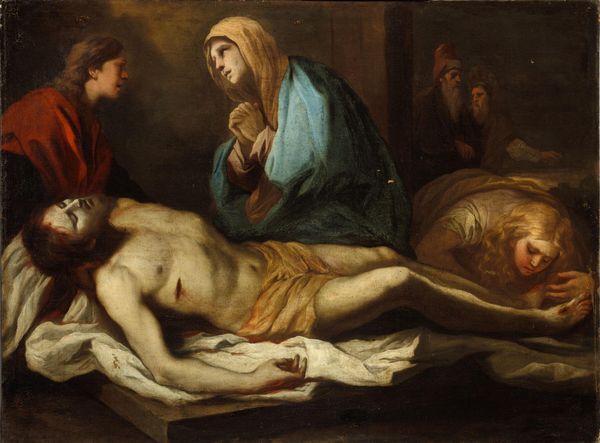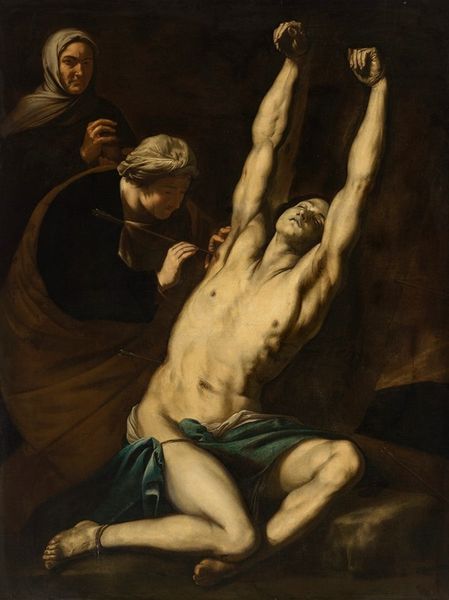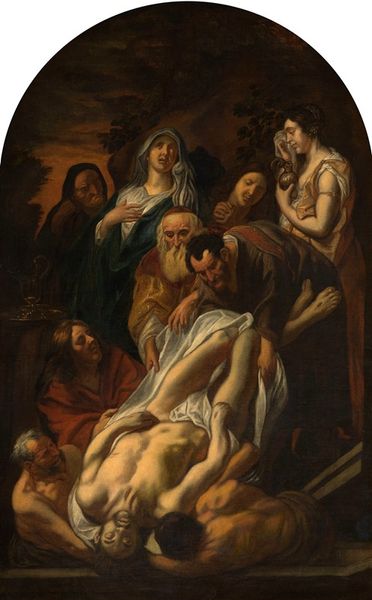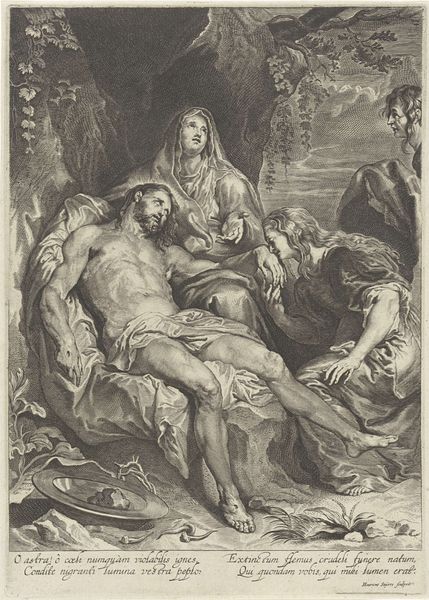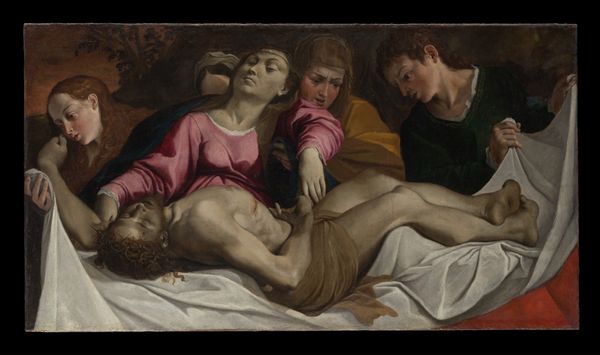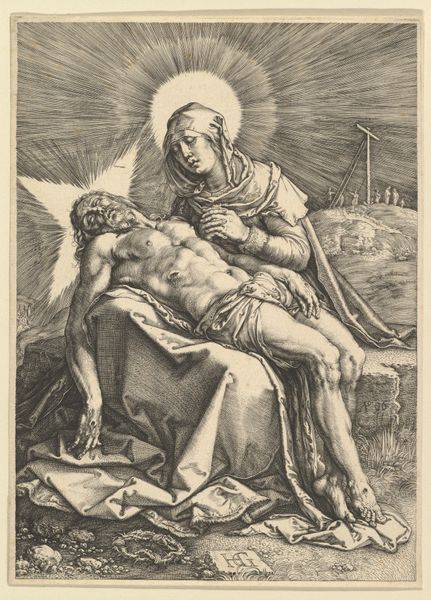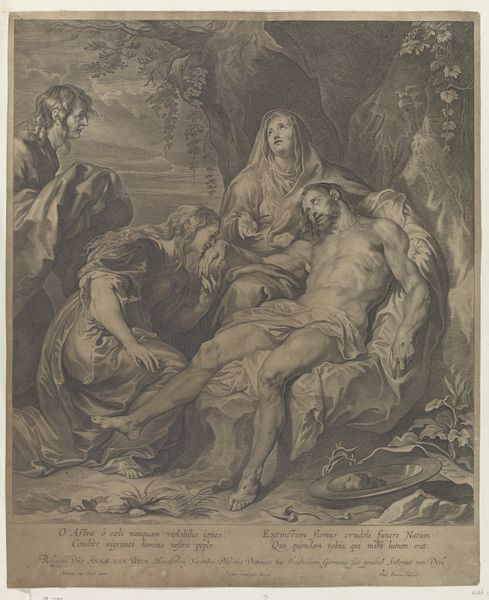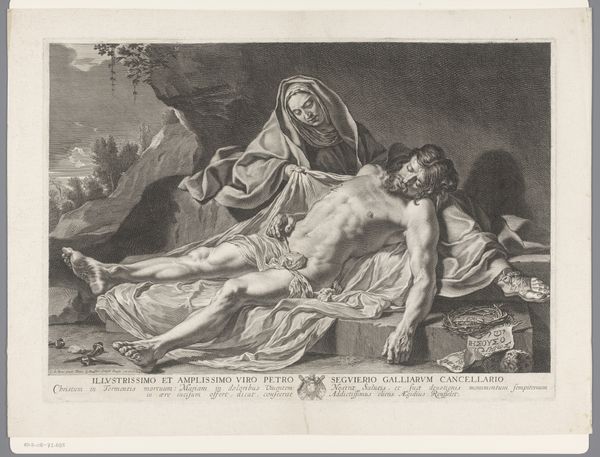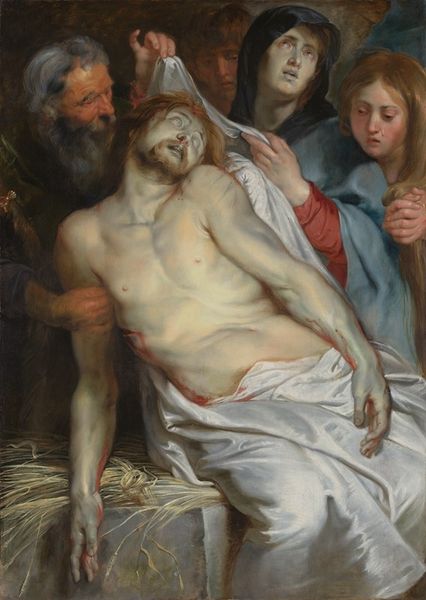
painting, oil-paint
#
portrait
#
baroque
#
painting
#
death
#
oil-paint
#
figuration
#
history-painting
#
nude
#
virgin-mary
#
christ
Dimensions: 63 1/4 x 56 1/2 in. (160.7 x 143.5 cm)
Copyright: Public Domain
Editor: Here we have Juan de Valdés Leal's *Pietà*, created between 1657 and 1660. It's an oil painting, and the stark realism, especially the blood, is really striking. It's such a brutal, yet sorrowful image. What cultural factors might have shaped a work like this? Curator: That rawness you perceive is precisely what makes it so impactful. To understand its cultural resonance, remember the Spain of the late 17th century. It was a society grappling with intense religious fervor and a fascination with mortality, fueled by devastating plagues and constant warfare. Works like this *Pietà* served a public function; they were often commissioned for churches or religious brotherhoods and were designed to inspire intense emotion and a sense of penitence. Do you see how the artist uses that theatrical, almost stage-like lighting? Editor: Yes, it spotlights the figures, which are rendered so realistically, but also increases the drama. Was there an intended political element to this kind of religious artwork? Curator: Absolutely. The Church was a powerful institution. Promoting such emotional pieces reinforced its spiritual authority and the importance of piety amongst the populace. By vividly portraying Christ's suffering, the painting served as a potent visual sermon, encouraging viewers to reflect on their own sins and seek redemption through the Church. What effect do you think these images had on the public? Editor: It must have been overwhelming! The painting certainly makes the suffering incredibly real. I can now see that its power extends beyond simply religious devotion; it's also about social control and political messaging. Curator: Precisely. Art is never created in a vacuum. Understanding its historical context reveals its complex layers of meaning. Editor: I see the work and the period in an entirely new way now. Thanks so much!
Comments
No comments
Be the first to comment and join the conversation on the ultimate creative platform.
